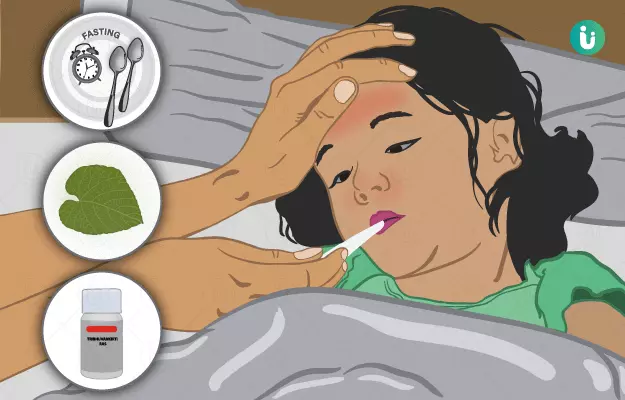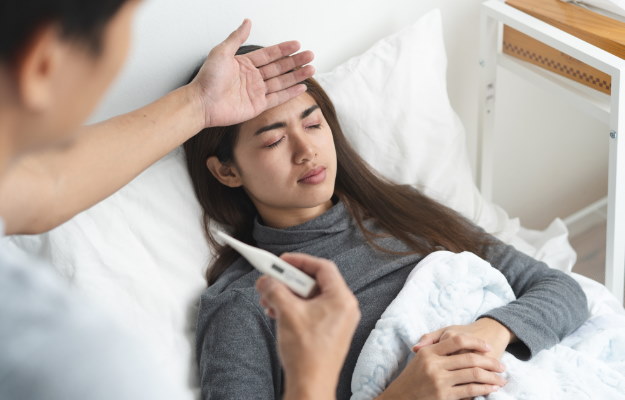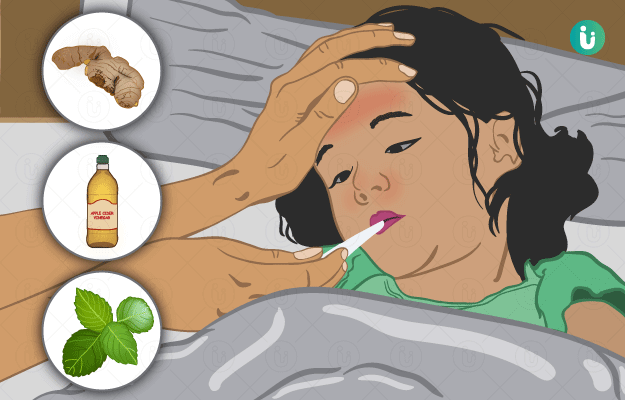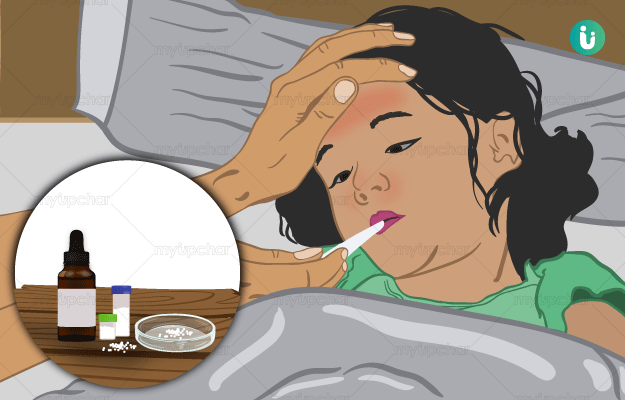Fever also referred to as jwara in Ayurveda, is considered to be the lord of diseases. According to western medicine, fever is the elevation in body temperature above 37°C. The distinctive feature of fever is rise in normal body temperature and a group of diseases fall in this category. Other symptoms commonly observed along with a fever are cough, cold, pain in the body, loss of appetite and constipation.
As per Ayurveda, treatments like vamana karma (medical emesis therapy), virechana karma (purgation therapy), basti karma (enema therapy) and nasya karma (nasal insufflation therapy) can be used in the management of fever. These will help in removing ama (toxins) from the body and uprooting the cause of the fever. Herbs like guduchi (giloy), amalaki (Indian gooseberry), vasa (malabar nut), adraka (ginger), bhumiamalaki (stonebreaker), pippali (long pepper) and mustaka (nut grass) are used to treat fever. The medicines commonly prescribed by the physicians for fever are sanjivani vati, mrutyunjay rasa, tribhuvan kirti rasa and sitopaladi churna (sitopaladi powder)












































